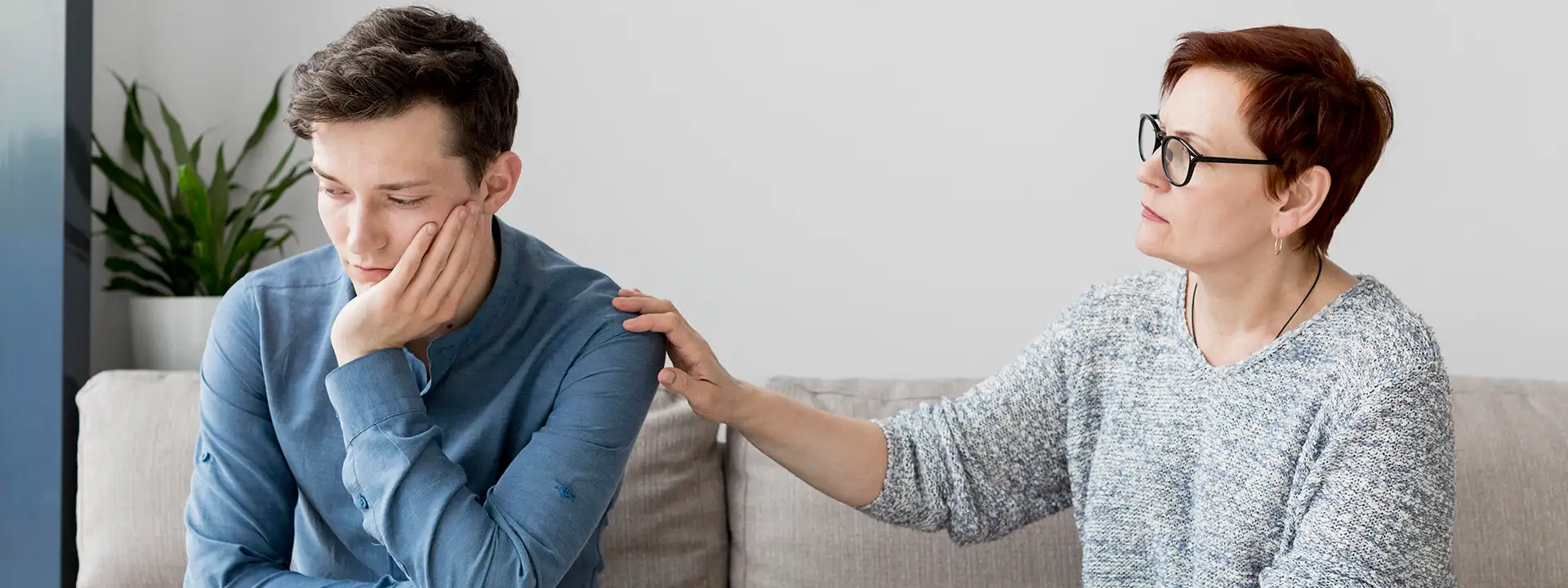The cucumbers made her anxious. Not rotten or processed. Still, a 28-year-old Katie tossed them out. She felt empty but “safe.”
Adrienne Matei wrote her story in The Guardian. Katie is a mom of two. She once loved health. Now? Scared of spinach, rice, and carrots. This is orthorexia—obsessing over “pure” food. When did caring about health become this intense?
Katie began quietly: less sugar, fewer snacks. Then came the podcasts and influencers. Salt? Poison. Gluten? Gasoline. Online chatter pushed her to eat cleaner and be thinner.
When did “healthy” feel so unhealthy?
Katie rinsed grains for long minutes. She skipped meals, feeling “clean.” Food labels made her cry. Yet, no one noticed. Not even her.
Friends praised her willpower. But was it power? What happens when fear replaces hunger? When does nutrition become a checklist full of shame?
Matei’s article shows more than Katie’s story. It reveals what fear-based eating advice does. And how eating disorders hide in plain sight.
Have you skipped meals to feel proud? Do you scrutinize ingredients like a detective? Is your plate full, but your life empty? So, ask yourself—why starve to fit in?
The Illusion of Control: When Healthy Eating Turns Harmful
In the introduction, we met Katie. Her story isn’t unique. Many people get lost in the clean-eating trend. They chase perfection, calling it discipline. They shrink their diets to gain control. But who’s truly in control here?
Recognize the signs. Count your food rules. Is avoiding oil worth the panic? Therapists provide real help and restore balance and peace. It all starts with one step: honesty.
TikTok fans, listen up. A 2024 study by Noebel, Howard, and Oberle drew a line between binge-watching diet content and orthorexia nervosa symptoms. They surveyed 305 people—mostly women in their twenties. More diet content meant more food anxiety.
Key findings:
- 78.3% of participants were women
- TikTok users viewed more diet content than users of other platforms
- More diet content = more orthorexic symptoms
- Body image didn’t drive it—content did
The study concludes that “clean eating” isn’t always healthy. Filters and critical thinking matter, too.
The Hidden Hunger: Understanding Compulsive Overeating
Now, let’s flip the coin. What about those who eat for comfort and not control?
Compulsive overeating is not about hunger. It fills emotional voids. Stress, sadness, boredom? Food silences them. Bites become blurred. Meals turn into marathons. And guilt always pops up for dessert.
Recognizing the pattern is step one. A treatment for eating disorder offers a roadmap. Cognitive-behavioral therapy (CBT) helps link emotions to eating. Nutrition counseling finds balance without judgment. Support groups share stories and strengths.
CBT teaches you to pause. Ask, “Am I hungry or hurting?” Awareness replaces autopilot, and meals become nourishing again, not numbing.
A 2024 study by Chao et al. in the International Journal of Eating Disorders explored CBT’s effects on binge-eating disorder (BED). Here’s what they found:
- Participants receiving CBT showed a drop of 14.6 binge episodes per month.
- The waitlist group had only 5.7 episodes.
- CBT improved eating drives and hunger (p < 0.05).
Yet, the twist? No big changes in brain responses to food cues. CBT makes bingeing less common but doesn’t alter brain reactions to food.
The Loop That Lies: When Eating Feels Like Drowning
We’ve just explored how compulsive overeating fills an emotional void. Now, let’s look into BED. It’s not a lack of willpower. It’s a response to heavy emotions—guilt, secrecy, self-loathing.
Binge eating feels like drowning in food—large amounts eaten quickly, often in secret. There is no purging, but shame always lingers. It’s common, more than many realize.
The solution? Comprehensive care plans. A treatment for eating disorder like BED requires multiple layers. CBT tackles emotional triggers. Nutritional counseling builds balanced eating habits. Support groups offer community and understanding.
CBT isn’t just about food—it’s about understanding the ‘why.’ It involves shifting from negative thoughts to healthier coping. Focus on feelings, not just food.
Rewiring the Mind: The Role of CBT
Let’s talk about thoughts behind eating disorders. They’re not solely about food; they’re about beliefs. Distorted views on body image and self-worth fuel harmful actions.
Negative self-talk becomes normal. “I ate too much; I’m worthless.” “Skipped a workout; I’m a failure.” These aren’t truths—they’re traps.
The fix? Cognitive restructuring. CBT helps identify and challenge bad beliefs. Shifting “I’m a failure” to “I had a tough day” changes the game.
Through structured sessions, individuals learn to think better and build healthier perspectives. CBT doesn’t erase the past, but it helps shape the present. It’s about progress, not perfection.
A 2024 randomized controlled trial published in JAMA Network Open evaluated the effectiveness of a web-based CBT self-help intervention for individuals with bulimia nervosa. The study involved 154 adults diagnosed with bulimia nervosa. Here are what the researchers found:
- Participants had fewer binge-eating episodes than the control group.
- Global eating disorder symptoms improved.
- Compensatory behaviors like purging didn’t change much.
Results suggest that web-based CBT can ease certain bulimia symptoms. It’s a useful tool alongside traditional therapies.
The Grocery List Won’t Fix You – But This Might
Eating disorders can starve the body. These issues don’t just warp thoughts—they deplete nutrients. Years of restriction or purging leave bodies in need. Hair thins. Bones weaken. Energy runs low. Meanwhile, the fear of food stays strong.
Nutrition therapy isn’t a meal plan—it’s a lifesaver. Registered dietitians assess nutrient needs, caloric intake, and health markers and craft personalized plans that restore balance and trust in food.
Rodriguez et al. (2025) explored anorexia recovery. They found cookie-cutter diets miss the mark. Personalized nutrition might work better. Here’s why:
- Gut microbiota can impact weight restoration outcomes.
- Conditions like anxiety need tailored plans.
- Metabolic rates vary wildly among patients.
It turns out that energy loss through fecal matter isn’t the same for everyone. Some may thrive on microbiota-focused meals. The takeaway? One-size-fits-all won’t help everyone. Customized plans may yield better results.
Turns Out, You Weren’t the Only One Counting Almonds
Eating disorders thrive in silence. When no one around understands breakfast can feel like a battlefield, isolation sets in.
Katie kept her fears quiet. Her family thought she was disciplined. At her lowest, she counted blueberries to the precise number. Eight felt fine. Nine invited shame. This silence allowed orthorexia to grow. Many facing eating disorders share this quiet spiral—until someone says, “Me too.”
Support groups for eating disorders offer connections. Weekly meetings allow people to voice what feels unspeakable. Stories intertwine. Shame recedes. New coping tools emerge.
A smart treatment for eating disorder extends beyond clinics. Peer-led groups foster real-life recovery. They make relapse feel less daunting and provide listeners, not lectures. For many, this is life-changing.
A 2024 study by Raspovic et al. investigated peer mentoring for eating disorders. Fifty-one mentees joined a six-month program during lockdowns. The aim? Recovery through shared experiences.
Here’s what they found:
- Scores on the EDE-Q (eating order examination questionnaire) and DASS (depression, anxiety, and stress scale) scores dropped.
- Most attended 12 out of 13 sessions.
- Hospital visits went down compared to the prior six months.
Mentees felt seen, hopeful, and motivated. The only downside? It ended too soon. Peer support didn’t just help—it worked.
So Many Doors, But Which One Leads Out?
We’ve discussed the value of community support. Now, how do you choose from the maze of treatment options?
The internet offers countless eating disorder treatment centers. Each promises effective care and speedy recovery. But how do you know which one is right for you?
The sheer volume of choices can paralyze. Questions swirl:
- Is this center reputable?
- Do they offer the therapies I need?
- Will my insurance cover it?
The fear of choosing wrong looms large, stressing an already tough situation.
Informed Decision-Making
Start by knowing your needs. Is it anorexia, bulimia, or binge eating disorder? Do you need inpatient care, outpatient therapy, or a mix? Research centers that specialize in your condition. Seek a level of care that suits you.
Look for facilities with comprehensive treatment plans. They should offer CBT and nutrition therapy for eating disorders. Check staff credentials, read patient reviews, and verify accreditation. Accessibility is key—consider location, cost, and support groups.
Embracing Recovery: A New Beginning
Recovery from an eating disorder involves layers—psychological, nutritional, and communal support. At Alter Behavioral Health, we understand these complexities. We offer tailored treatment plans to meet individual needs.
Ready to reclaim control over food? Let us guide you on your journey to recovery. Contact Alter Behavioral Health today to learn about our comprehensive treatment programs.



